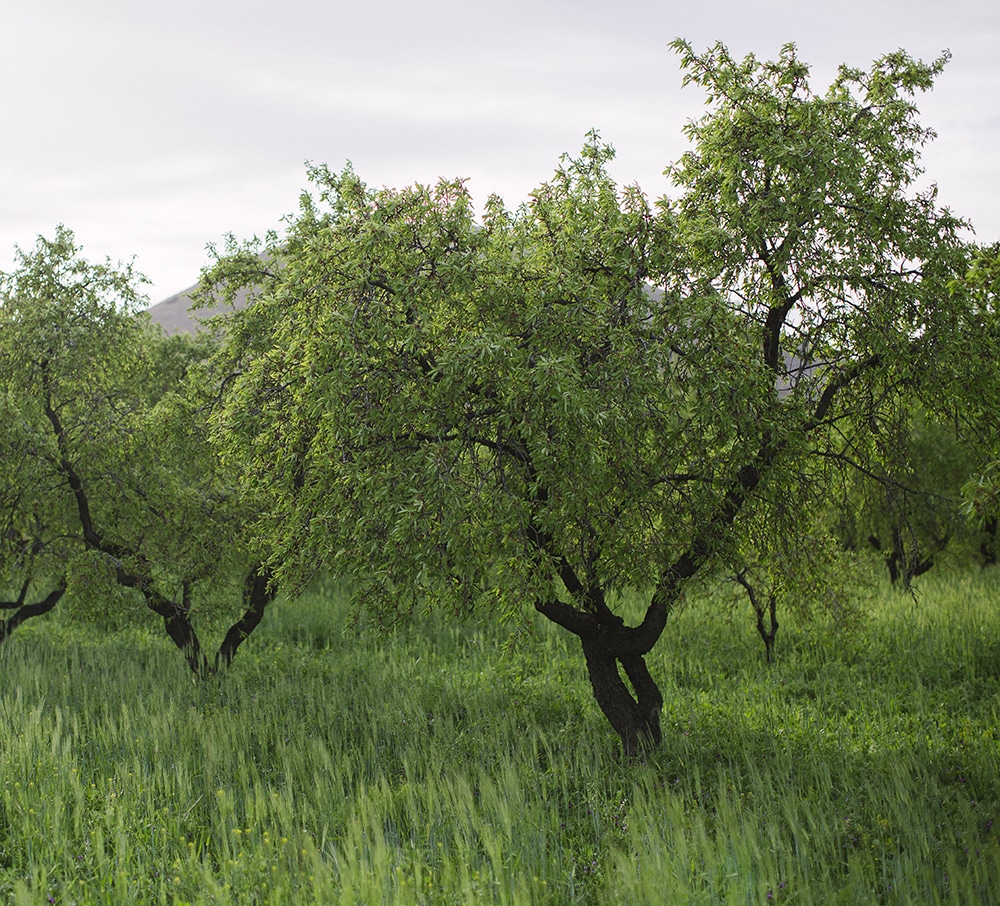The only way is ethics: agroforestry
Charles Tebbutt, founder and director of nuts stall Food & Forest, on the environmental and agricultural benefits of using trees in arable farming


“AGROFORESTRY TAKES CHANGES IN FARMING OVER THE PAST CENTURY AND COMBINES THEM WITH THE BENEFITS OF PERMACULTURE”
Words: Clare Finney
“What does it mean to call your product ethical?” muses Charles Tebbutt. “What does it mean to make that claim to sustainability?” As the inaugural subject of this new column, the founder and director of Food & Forest has thought long and hard about this question, and how his business of supplying nuts produced by a network of suppliers, all of whom use a method known as ‘agroforestry’, fits in.
“For me, there are two distinctive canons in this area. On the one hand you have Slow Food, helping to revitalise small scale producers. There is concern for the dignity and integrity of the rural community and environment, and support for an alternative to mechanised production.” On the other hand, he continues, you’ve a “utilitarian framework”: how, with exponential growth in global population, do we find production methods that are capable of feeding the world?
Agroforestry, Charles explains, combines the best aspects of both these canons. “By comparing how much an acre of land produces under various approaches to management, Cranfield University concluded that one hectare of agroforestry yields as much as 0.8 hectares of arable crops and 0.6 hectares of forestry. You’re getting 1.4 hectares worth of production from one hectare,” he smiles. “You’ve nailed the utilitarian argument.”
So how does agroforestry – the use of trees in arable farming – contribute toward the sustainability of rural areas? To answer this, it helps to imagine the farms in question: long avenues of grain, each around 30m wide, lined by flowering and fruiting trees. The aesthetic merits of mixing fields of otherwise monotonous arable crops with nut and fruit trees are obvious, but what is more significant is the contribution these trees make toward the fertility and yield of the farm, and its impact on the environment.

“In East Anglia, where there are few hedges, farmers see it as normal for the topsoil to blow away periodically – but the trunks help decrease wind speed,” Charles points out. Meanwhile, the deep roots of the trees further reduce soil erosion, thereby retaining its stock of nutrients as well as adding to it via leaf litter come autumn.
“Stephen Briggs, one of the leading proponents of agroforestry, talks a lot about the subsoil that cannot normally be accessed by arable crops,” he continues. “Because the tree roots go deeper, they suck up the phosphorous from the subsoil, which is recycled when the leaves fall. This means the nutrients reach the topsoil, without the need for excess fertiliser.” It’s good for the environment – less fertiliser is required so there’s less run off and river pollution – “but it is also conducive to large yields.”
The benefits don’t stop there. Because the ground crops utilise water, nitrogen and sunlight earlier in the year than the trees, there is far less nitrate loss overall. “You harvest that crop, and when you have harvested that, the tree crop starts coming. The time frames are complementary.” Any nitrogen that isn’t utilised by crops is subsequently captured by the roots of the trees.
As keen campers among you will have found, the ground temperature in woodland is invariably higher than in an open field. “There is evidence to suggest the presence of tree roots means the soil warms up sooner in spring and stays hotter for later in autumn. The roots trap the heat and insulate the soil,” says Charles – making life easier for crops as well as sleeping campers. In short, says Charles, “agroforestry takes the best developments in farming over the past century – the yields, the logistical efficiency and the use of technology – and combines them with the environmental benefits of permaculture.” In this way, it takes the ethical imperative to care for the environment and combines it with the ethical imperative to feed our growing population. This is ethics, every which way.


